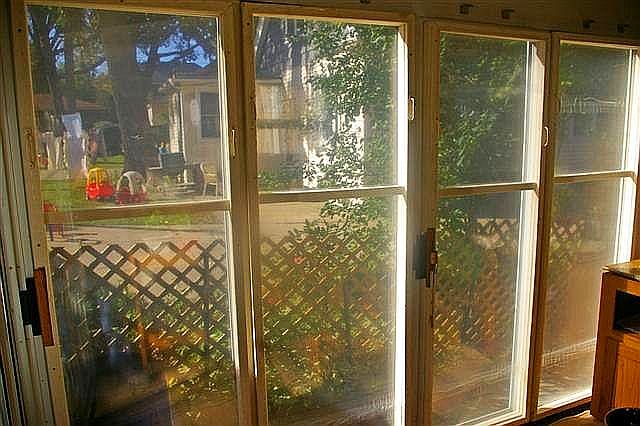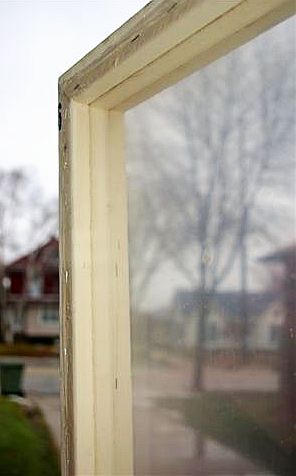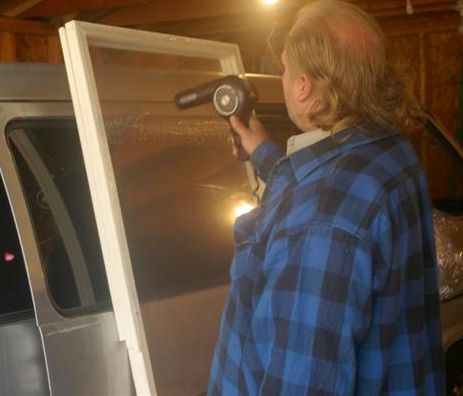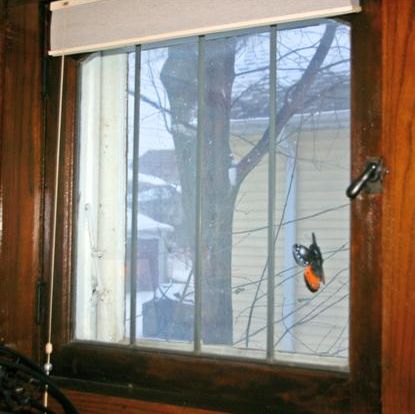Email This Page

Five Pane Inserts in SunroomIn many a posting in recent months, I have talked a lot about the window inserts for the sunroom and other applications of this low-tech energy savings method. See entries for Sept. 14th, 17th and 20th, 2007, Oct. 17th, 2007 , Oct. 22nd, 2007, Oct. 27th, 2007, and Dec. 12th, 2007. Although the measurement of the savings goes on, it is time to write up the method. Like Growing Power itself, these window inserts and multi-panes involve no new technology. Storm windows, plastic coverings for the windows, and double-pane windows have been around for a long time. What makes this low-tech energy savings new is its application and affordability

3 panes 1 insertThe Warm Air Pane adventure started with my unheated sunroom. Although I have been putting a few layers of plastics over the windows in the winter, and had increased the insulation in the floor, keeping my sunroom warm enough for growing in the winter still involved a heater. I thought about adding insulation to the ceiling (which is already insulated), but my friend John suggested something new and inventive. He suggested that he build 3 window insert frames for each window. He suggested covering them with four layers of clear plastic, like you purchase in commercial window-insulating kits for inside windows, and then use a blow-drier to make them tight. Then he would put them together to create an inside insert for each window. I gave the okay, and with inadequate tools, some inexpensive lumber, and a bunch of commercial window-insulation kits, he began.
As a youngster John had lived in a passive-solar pole house that his dad, my long time friend, had built in the country, and he was familiar with how this type of insulating works. Basically the insulation factor, or “R factor” as it is called, it is not based so much on the thickness of the glass, plastics, or insulation, but on the layers or pockets of still air that the warmth from one side must pass through to reach the cold on the other side. For example, with the familiar two-pane windows, the energy from warm internal air must pass through one air-pocket and two barriers to reach the cold outside.

The three frames were custom made for each window, since they needed to fit snugly in the window for the insert to be effective. After the frames were made. clear plastic from inexpensive insulation kits were put on either side of inserts. The clear plastic was kept in place with the two-sided tape in the kits and with staples. (Now I would use clear insulating tape as I did with the eight windows in the house, as described below.) My wife’s hair dryer was used to tighten the plastic so it became clear. With the layer of air between the window and the four layers of plastic I now had five layers of air for each insert.
How much energy we are saving will need to be tested. Just from observation and checking the weather gauges we have outside, inside the sunroom, and inside the house, I can maintain a 15–25 degree difference between the sunroom and outside without the use of the electric radiator heater. My friend’s father recently gave me a bunch of inexpensive thermometers and told me a little how to measure my energy use or savings.

One of eight small windows in houseThere are many spin-offs to this low-tech way of insulating and energy saving. One that came to my mind immediately happened when one of the eight small storm windows I have on the first floor on my house came off. Before putting it back up I put a layer of clear plastic (which I have now purchased even more inexpensively in a roll kit) on each side of the storm. So now what once was a two-pane window, with the addition of an air-pocket in front of the window inside and the pocket of air between the window and storm glass, has become a four-pane window. I have now double the insulation power on all eight windows. The kit comes with two-sided tape, alcohol wipes, and clear plastic roll. Two $10 kits were enough to cover all eight storms on two sides. As I mentioned before, the only modification I made was to use clear plastic tape, made to stand up in the cold, instead of staples.
There are many other applications for this low-tech energy saving idea. This same process could be used to insulate greenhouses such as at Growing Power. A few more layers of plastic, separated by air pockets, could really reduce the heat loss from the inside out. Of course the clear plastic allows the sun in and us to see out. Also window inserts could be made of nicer wood and even glass could be substituted for plastic if one wanted something more aesthetic looking.
In the summer I will remove the inserts from the sunroom from the inside. Each insert has two handles on it and comes easily out or can be put back in. I will store the inserts in the basement until next year and than reuse them. The eight small storms we did around the house are for windows on which I do not replace storms with screens in the summer. If the plastic on any window inserts or storms wears or tears it is easily and cheaply repaired. In the summer I hope that the eight windows in the air-conditioned house will help keep in the cool air just as they keep in the warm air in the winter.
As I mentioned in the beginning of this posting there is nothing new about this method of energy savings. Using clear plastic window kits or storms on windows is not new. What is different is taking this method another step and using multiple layers of air pockets to let the sun’s energy in but not let it out. For amount of energy savings cost please see the AIR Fact Sheet. As Will of Growing Power would might say: “It is the same old, same old.”